The project supports small-scale farmers in transforming their open fields into diverse agroforestry systems known as Forest Gardens. Each Forest Garden is surrounded by a live fence composed of three tree species, which protect the land while improving soil health and fertility through nitrogen fixation and the provision of biomass for mulching and composting. The Garden is divided into sections by marejea, lines of multipurpose trees or crop lines such as pigeon peas. Within the garden, a variety of food crops and fruit trees ensure year-round access to nutritious food. In addition, timber and multi-purpose trees are planted for household use, partial shading, and to enhance the microclimate for better soil and water management. Forest Gardens also create a pleasant and inspiring work environment, enabling farmers to earn a decent livelihood from sustainable agriculture.

Forest Gardens are multi-layered, integrated agroforestry system that combine trees, shrubs, crops and animals in one area to sustainably produce a variety of products and environmental services. There are many types of Forest Gardens depending on location and tradition.
The project in Mwanga district, Tanzania picked the Trees for the Future model as its starting point. Trees for the Future has helped over 10,000 farmers in Tanzania to establish Forest Gardens, starting a transformation of agricultural livelihoods and landscapes. This project pilots a similar approach in Mwanga, and thus learning from practice is an important component of the project.
- The project started in January 2023 and will run till the end of 2026.
- The project works in seven villages: Kifaru, Kituri, Kisangara, Kiruru Ibweijewa, Kwanyange, Ngulu and Kwakoa.
- There are 369 members in the farmer groups.
- Calculated with the average family size of 7 persons, our project benefits about 2500 persons.
- More than half of group members are women.
- In addition, the project has trained and helped 15 youth to grow seedlings.
- Two full-time staff and 5-7 government extension officers facilitate farmer group activities.
- Each group is visited once a week for training and follow-up discussions.
- 85% (192,000€) of the funding comes from the Ministry for Foreign Affairs of Finland; the remaining 15% needs to be topped up by Liana from various sources.

This blog page shares training session plans, lessons learned, farmer handouts, technical instructions etc
Impacts of this project are in four main areas:
- Food security and nutrition: Increased diversity of nutrient-rich foods throughout the year
- Income: Diverse farm products provide more to sell
- Natural environment: Improved landscapes by increased tree cover, fertile live soils with soil microbes, improved water cycle, improved microclimates, increased biodiversity, carbon sequestration and protection from weather extremes (all these are also human benefits!)
- Empowerment: Farmers are more knowledgeable, enthusiastic and socially empowered and they have adequate employment and livelihood; Youth have activities to engage their time and skills and enable income generation
Establishing a Forest Garden is done in stages in 3-4 years
Large-scale tree nurseries
… are established in January-February for a live fence (hedge, wigo) which consists of three tree species. All species fix nitrogen from the atmosphere. Each farmer aims to grow about 1000 to 1500 seedlings in one season. This is repeated in year 1 and year 2 to complete the live fence.
Protecting the farm from neighbors’ livestock is essential for the following stages (fruit and timber trees, and vegetable growing).
The total number of trees grown by farmers in the farmer groups is about 900,000 trees. During the latter two years group members will reach out to their neighbors and help them start at least some of the components of the Forest Gardens.


The live fence
Live fence is planted around the farm of 0.5 to 2 acres at the beginning of the rainy season in early April. In total, the live fence has has three tree species and about 2500 trees per farm. It is pruned and weaved to keep it dense and less than 2 meters high. Both Leucaena and Gliricidia are used for fodder (Leucaena alone, Gliricidia as mixed with other fodder types). Gliricidia branches and leaves are cut for mulch to cover the soil and improve its texture, and for composting. Larger branches from pruning can be used for firewood. All species fix nitrogen from the air. The fence is planted as follows:
- On the outer line Acacia polycantha seedlings are planted at 30cm interval
- On the middle line Gliricidia sepium and Leucaena leucocephala are planted alternately at 30cm interval
- On the inner line Gliricidia is planted at 50 cm interval
- Lines are 50cm apart

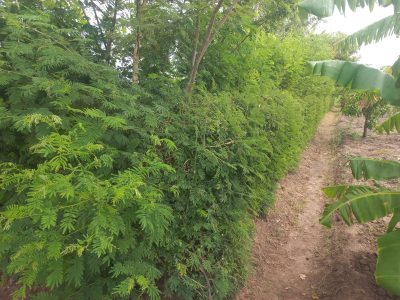

Alley cropping and contour lines
The farm area inside the live fence is divided for different agroforestry activities by east-to-west alley lines (marejea), or contour lines if the farm is on a slope.
Species used for the marejea include Pigeon peas and/or Gliricidia and fodder grass combinations.
Pigeon pea is a nitrogen-fixing semi-perennial legume that is kept growing 3-4 years. Thereafter it is cut and uprooted and planted in another place. It has strong and long roots that can penetrate into hard soils breaking it and making the soil more suitable for other plants.

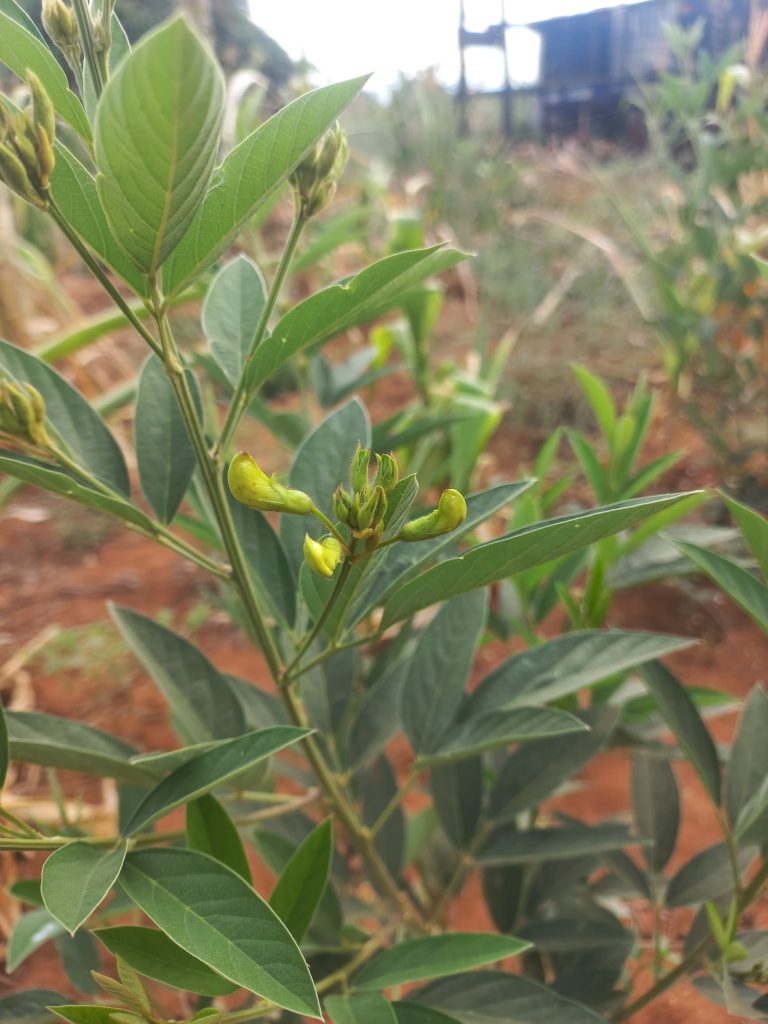
Fruit and timber trees, vegetable gardening and diversified cropping
Separate areas are allocated for a variety of fruit and timber trees and kitchen gardens for vegetables (grown by irrigation), sweet potatoes, cassava etc.
Fruits may include: papaya, guava, lemon, passion, avocado, mango. An ideal vegetable selection includes roots, leaves and fruits. Fruits and vegetables of several colours ensure diversity of micronutrients and polyphenols.
Space is also allocated vertically for multiple uses (ie multi-layered, with taller plants over shorter plants).

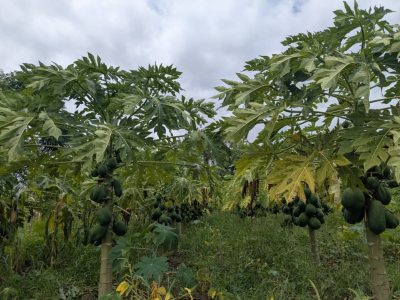

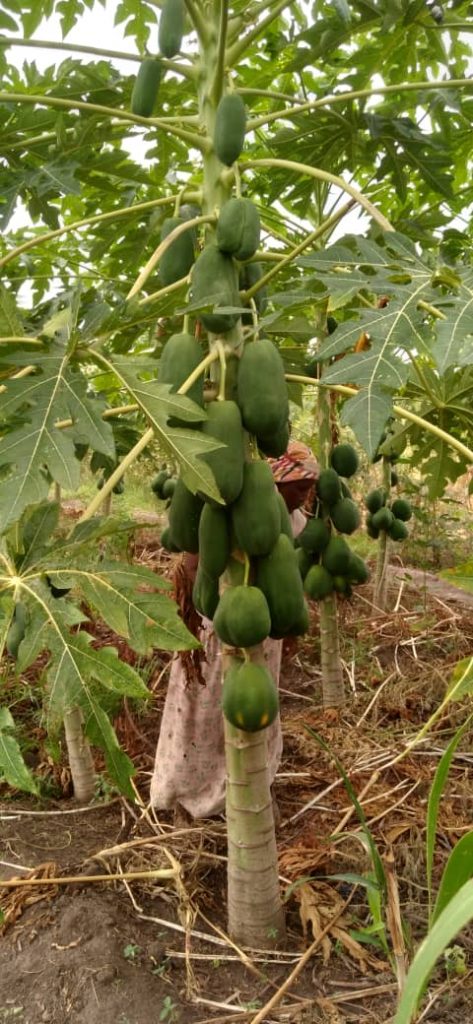
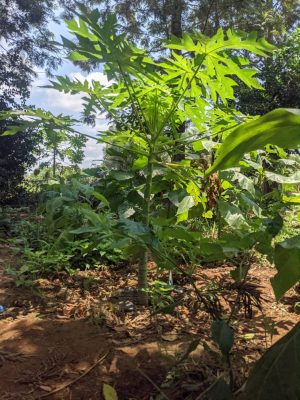
Composting, mulching, organic pesticides and organic boosters
Composting, mulching and crop rotation, together with organic pesticides, and manure and plant boosters are used to combat pests and ensure healthy soils. Farmers keep livestock, and availability of manure is an essential part of Forest Gardening.
Soils are kept covered all year round by living vegetation or by mulch (eg leaves from Gliricidia from the live fence). This protects the soils from erosion and reduces ground temperature improving soil microbial activity. Microbes break down organic matter into nutrients that plants can use for their growth.
It is important to follow crop rotation to avoid pests built-up. Our easy to remember clockwise rotation patter
leaves -> legumes (green leaves consume a lot of nitrogen)
legumes -> root plants
roots -> to fruits (and back to greens)
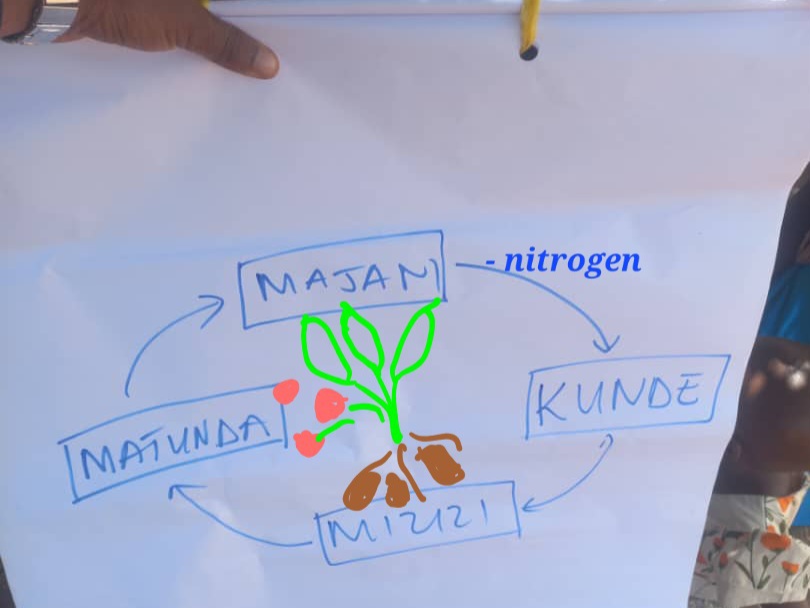


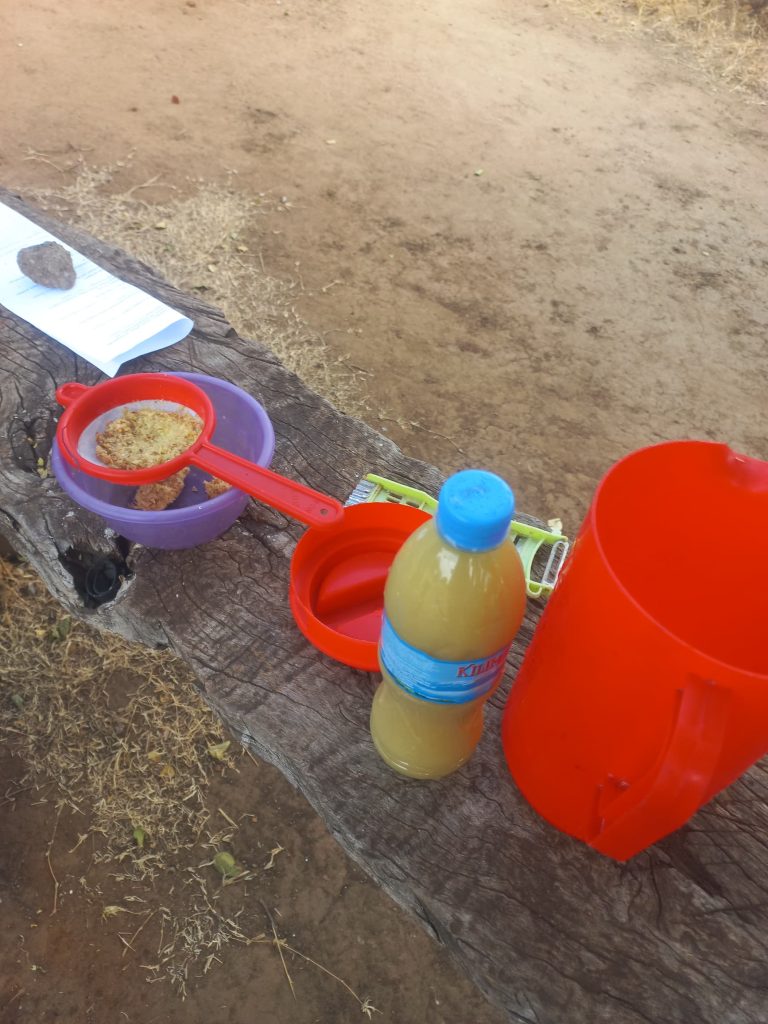


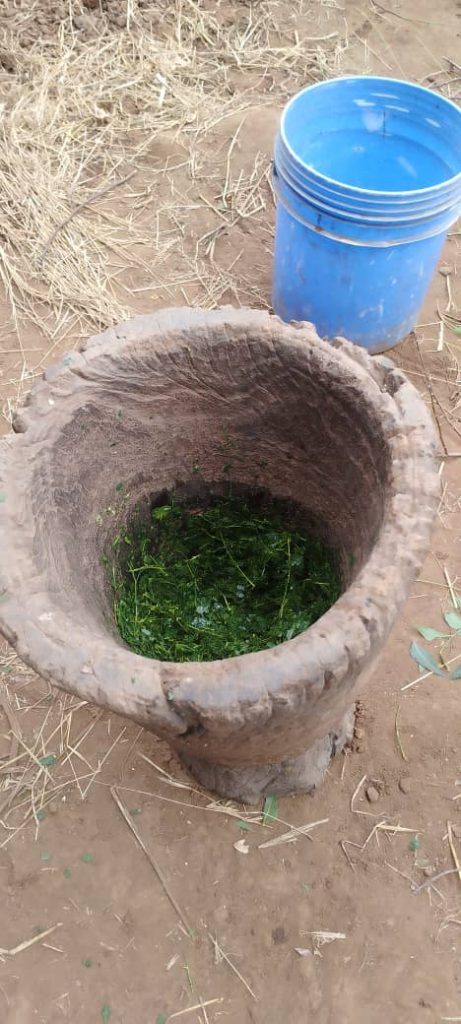
We source our knowledge for organic agriculture from SAT (Sustainable Agriculture Tanzania) courses in Morogoro.
Water source
We help farmers dig shallow wells, if groundwater is close enough, that is 7-12 meters deep. In some of the villages in Mwanga this is possible, in some others not. There are specialised digger teams that can be hired to dig.
The triple-line live fence is expected to grow rain-fed, as it is planted at the beginning of the rainy season in early April. But having one’s own water source makes the establishment and development of a Forest Garden much easier and faster (eg one can plant more fruit or timber tree seedlings per year).


Bottle irrigation
… helps in directing water deep to the roots. This reduces loss of water from the surface evaporation.
Irrigation is necessary for getting fruit and timber tree seedlings well established. One needs to water them for about two years during dry periods.
Drip irrigation
Irrigation is also needed for vegetable growing. Drip irrigation can save water. Normally one 20 liter bucket mornings and evenings is enough to irrigate about 100 planting spots, a garden of 1.5 x 8 meters, or 1 x 10 meters.

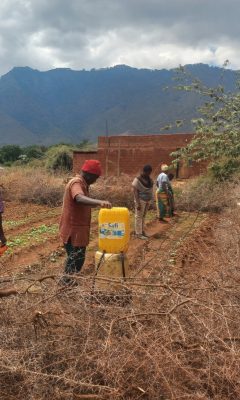
Village Community Banking Associations and Marketing
In addition, Village Community Banking Associations (VICOBA) are formed to help farmers to get short-term loans for investing in Forest Garden activities, and coping with shocks (sickness, death of a family member etc). In the latter part of the project Marketing Associations are formed for collective selling of crops.
